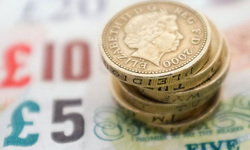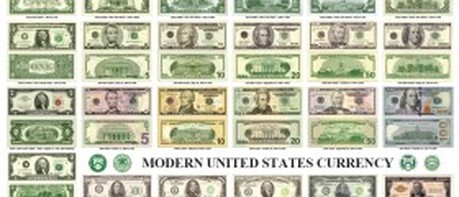
Early people had no system of money as we know it. To get the things they wanted, people used the barter system of trading. Gradually, people learned that almost everyone would accept certain goods in exchange for any product or service. These goods included animal hides, cattle, cloth, salt, and articles of gold or silver. People began to use such merchandise as mediums of exchange, much as we use money.
Many people still use barter, especially in the developing countries of Africa, Asia, and Latin America. Millions of families in these countries live by farming and produce barely enough food to meet their own needs. As a result, they seldom acquire any money and must use barter to obtain the things they want. People in industrial countries also turn to barter if money becomes scarce or worthless. For example, barter became widespread in Germany after the country’s defeat in world war II (1939-1945). German money became almost worthless, and people refused to take it. Instead, they bartered for most goods and services. They also used cigarettes, coffee, and sugar, which were in short supply, as mediums of exchange.
The first coins may have been made during the 600 B.C in Lydia, a country in what is now western Turkey. The coins were bean-shaped lumps of electrum, a natural mixture of gold and silver. The coins had a stamped design to show that the king of Lydia guaranteed them to be of uniform value. The designs saved people the trouble of weighing each coin to determine its value. Traders accepted these coins instead of cattle, cloth, gold dust, or other goods as a medium of exchange. Other countries saw the advantages of the Lydian coins and began to make their own coins.
Many historians believe that coins were also invented independently in ancient China and in India. At first, the Chinese used knives, spades, and other metal tools as mediums of exchange. As early as 1100 B.C they began to use miniature bronze tools developed into coins.
Coins today have many of the same features that they had in ancient times. For example, they have a government-approved design stamped on them, like the coins of ancient Lydia.
The development of paper money
The development of paper money began in china, probably during the A.D 600 s. The Italian trader Marco polo traveled to china in the 1200 s and was amazed to see the Chinese using paper money instead of coins. In a book about his travels, polo wrote: “All his [the Chinese emperor’s] subject receive it [ paper money] without hesitation because, wherever their business may call them, they can dispose of it again in the purchase of merchandise they may require”.
In spite of polo’s description, Europeans could not understand how a piece of paper could be valuable. They did not adopt the use of paper money until the 1600s. when banks began to issue paper bills, called bank notes, to depositors and borrowers. The notes could be exchanged for gold or silver coins on deposit in the bank. Until the 1800s, most of the paper bills in circulation were notes issued by banks or private companies rather than by governments.
Some of the first paper currency in North America consisted of playing cards. This playing-cards money was introduced in Canada in 1685. Canada was then a French colony. Money to pay the French soldiers stationed there had to be shipped from France. Shipments were often delayed, however, and cash grew so scare that the colonial government began to issue playing cards as currency. Each card was marked a certain value and signed by the governor. Such playing-card money circulated for more than 70 years.
Many people still use barter, especially in the developing countries of Africa, Asia, and Latin America. Millions of families in these countries live by farming and produce barely enough food to meet their own needs. As a result, they seldom acquire any money and must use barter to obtain the things they want. People in industrial countries also turn to barter if money becomes scarce or worthless. For example, barter became widespread in Germany after the country’s defeat in world war II (1939-1945). German money became almost worthless, and people refused to take it. Instead, they bartered for most goods and services. They also used cigarettes, coffee, and sugar, which were in short supply, as mediums of exchange.
The first coins may have been made during the 600 B.C in Lydia, a country in what is now western Turkey. The coins were bean-shaped lumps of electrum, a natural mixture of gold and silver. The coins had a stamped design to show that the king of Lydia guaranteed them to be of uniform value. The designs saved people the trouble of weighing each coin to determine its value. Traders accepted these coins instead of cattle, cloth, gold dust, or other goods as a medium of exchange. Other countries saw the advantages of the Lydian coins and began to make their own coins.
Many historians believe that coins were also invented independently in ancient China and in India. At first, the Chinese used knives, spades, and other metal tools as mediums of exchange. As early as 1100 B.C they began to use miniature bronze tools developed into coins.
Coins today have many of the same features that they had in ancient times. For example, they have a government-approved design stamped on them, like the coins of ancient Lydia.
The development of paper money
The development of paper money began in china, probably during the A.D 600 s. The Italian trader Marco polo traveled to china in the 1200 s and was amazed to see the Chinese using paper money instead of coins. In a book about his travels, polo wrote: “All his [the Chinese emperor’s] subject receive it [ paper money] without hesitation because, wherever their business may call them, they can dispose of it again in the purchase of merchandise they may require”.
In spite of polo’s description, Europeans could not understand how a piece of paper could be valuable. They did not adopt the use of paper money until the 1600s. when banks began to issue paper bills, called bank notes, to depositors and borrowers. The notes could be exchanged for gold or silver coins on deposit in the bank. Until the 1800s, most of the paper bills in circulation were notes issued by banks or private companies rather than by governments.
Some of the first paper currency in North America consisted of playing cards. This playing-cards money was introduced in Canada in 1685. Canada was then a French colony. Money to pay the French soldiers stationed there had to be shipped from France. Shipments were often delayed, however, and cash grew so scare that the colonial government began to issue playing cards as currency. Each card was marked a certain value and signed by the governor. Such playing-card money circulated for more than 70 years.

 RSS Feed
RSS Feed